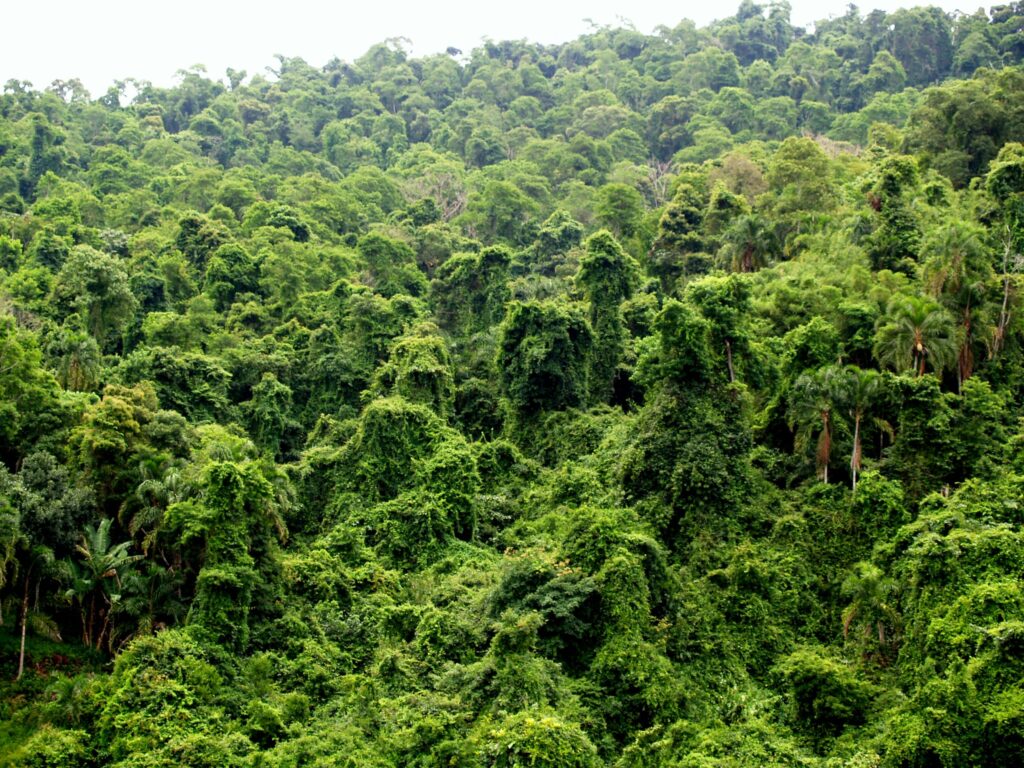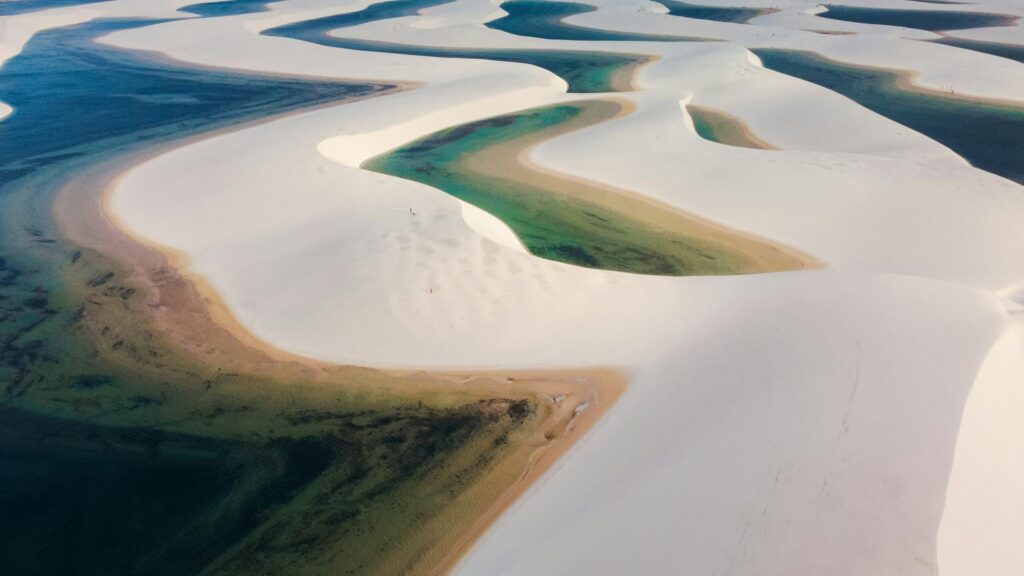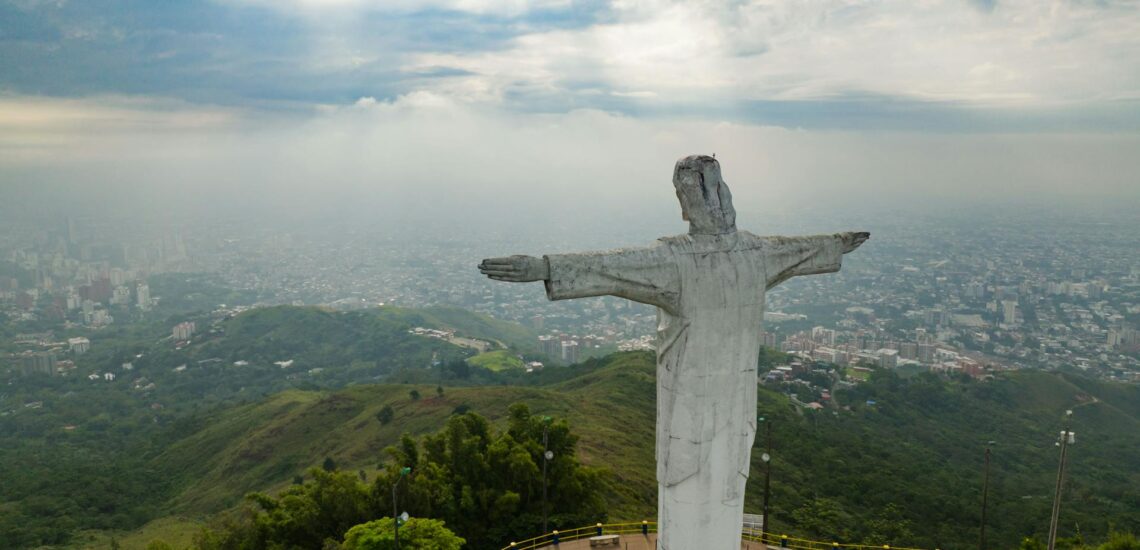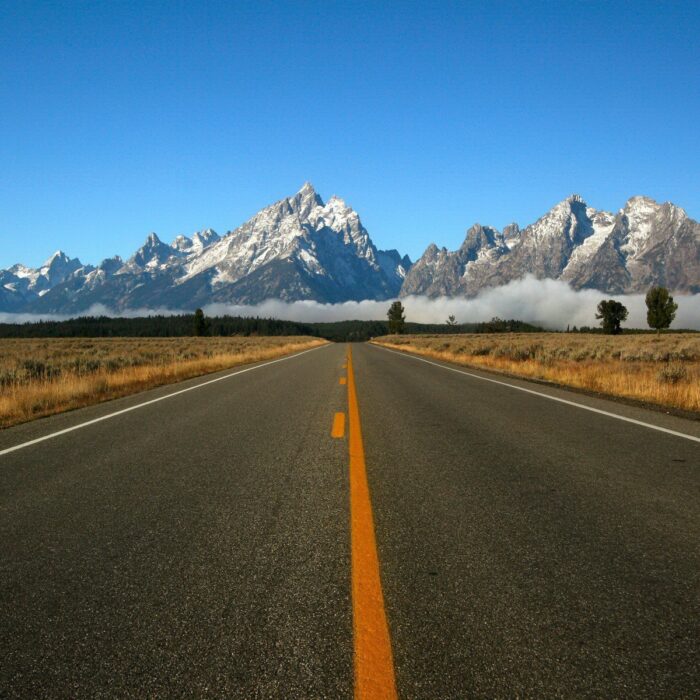Quick facts about Brazil:
- Population: Approximately 215 million people.
- Capital: Brasília.
- Official Language: Portuguese.
- Currency: Brazilian real (BRL).
- Government: Federal presidential constitutional republic.
- Major Religion: Christianity (predominantly Roman Catholicism).
- Geography: The largest country in South America, covering an area of approximately 8.5 million square kilometers, Brazil shares borders with every South American country except for Chile and Ecuador, boasting diverse ecosystems including the Amazon Rainforest, Pantanal wetlands, and Atlantic coastline.
Fact 1: More than 60% of the Amazon jungle is in Brazil
The Amazon rainforest is the largest tropical rainforest in the world, spanning multiple countries in South America, including Brazil, Peru, Colombia, Venezuela, Ecuador, Bolivia, Guyana, Suriname, and French Guiana. However, Brazil is home to the largest portion of this vast and biodiverse ecosystem, making it a crucial steward of the Amazon’s ecological health and biodiversity. The Amazon rainforest plays a vital role in regulating global climate patterns, supporting diverse wildlife, and providing essential ecosystem services, such as carbon sequestration and oxygen production.

Fact 2: The main symbol of Brazil is the statue of Christ in Rio de Janeiro
The statue of Christ the Redeemer (Cristo Redentor) in Rio de Janeiro is one of the most iconic symbols of Brazil. This colossal statue, standing atop the Corcovado mountain overlooking the city, is a globally recognized symbol of Christianity and a UNESCO World Heritage site. Christ the Redeemer is not only a religious icon but also a cultural and tourist landmark, attracting millions of visitors from around the world each year. The statue’s outstretched arms symbolize welcome and peace, embodying Brazil’s spirit of hospitality and diversity.
Fact 3: Brazilian soccer team has won the World Cup 5 times
The Brazilian national soccer team has won the FIFA World Cup a record five times. Brazil’s victories occurred in the following years:
- 1958: Brazil won their first World Cup in Sweden, defeating the host nation 5-2 in the final.
- 1962: Brazil secured their second World Cup title in Chile, defeating Czechoslovakia 3-1 in the final.
- 1970: Brazil won their third World Cup in Mexico, defeating Italy 4-1 in the final.
- 1994: Brazil claimed their fourth World Cup title in the United States, defeating Italy in a penalty shootout after a goalless draw in the final.
- 2002: Brazil won their fifth World Cup in South Korea and Japan, defeating Germany 2-0 in the final.
Brazil’s success in the FIFA World Cup has established them as one of the most successful and dominant teams in the history of international soccer.

Fact 4: There are more than 400 airports in the country because of the long distances involved
Brazil is a vast country with extensive territory, and as a result, it has a large number of airports to serve its diverse regions and accommodate the long distances involved in domestic travel. These airports vary in size and capacity, ranging from major international hubs in cities like São Paulo, Rio de Janeiro, and Brasília to smaller regional airports serving remote areas of the Amazon rainforest and the Brazilian interior. The abundance of airports in Brazil plays a crucial role in facilitating air travel and transportation connectivity, supporting domestic tourism, commerce, and economic development across the country.
Note: If you are planning a trip to this country, check if you need an International Driver’s License in Brazil to drive.
Fact 5: Brazil the place of the biggest and most colorful carnivals
Brazil is renowned for hosting some of the biggest, most vibrant, and colorful carnivals in the world. The most famous of these is the Rio Carnival (Carnaval do Rio de Janeiro), held annually in Rio de Janeiro, which attracts millions of visitors from around the globe. The Rio Carnival is celebrated with elaborate parades, samba competitions, street parties, and extravagant costumes and floats, creating a spectacle of music, dance, and revelry that captivates audiences worldwide.
In addition to the Rio Carnival, other Brazilian cities also host notable carnivals, each with its own unique traditions and cultural flair. For example, Salvador’s Carnival (Carnaval de Salvador) is known for its lively street parties and Afro-Brazilian music, while Recife and Olinda’s Carnival (Carnaval de Recife e Olinda) features frevo and maracatu music, vibrant costumes, and giant puppets.
Carnival season in Brazil is a time of joyous celebration and cultural expression, with festivities lasting several days leading up to Lent.

Fact 6: Brazil is the largest exporter of coffee
Brazil’s favorable climate, vast agricultural land, and expertise in coffee cultivation have made it a global leader in coffee production and export. The country’s coffee industry dates back to the 18th century, and today, Brazil accounts for a significant portion of the world’s coffee supply.
Brazil produces a variety of coffee beans, including Arabica and Robusta, with Arabica being the most commonly grown. The country’s diverse regions, such as Minas Gerais, São Paulo, and Espírito Santo, offer ideal growing conditions for coffee plants, including rich soil, ample rainfall, and favorable temperatures.
Fact 7: Brazil is one of the countries with megadiversity
The Amazon basin alone is estimated to contain around 10% of the world’s known species, making it a biodiversity hotspot of global importance.
In addition to the Amazon rainforest, Brazil boasts a range of other ecosystems, including the Atlantic Forest, Cerrado savanna, Pantanal wetlands, and Caatinga scrublands, each supporting unique flora and fauna adapted to their specific environmental conditions.
The country’s megadiversity is further enhanced by its extensive coastline, diverse marine habitats, and inland waterways, which provide additional ecosystems and support a wealth of aquatic life.

Fact 8: Brazil is home to several martial arts
Some of the most notable martial arts associated with Brazil include:
- Capoeira: Perhaps the most famous Brazilian martial art, capoeira combines elements of dance, acrobatics, and music. Developed by enslaved Africans in Brazil during the colonial era, capoeira served as a form of self-defense disguised as a dance to evade detection by colonial authorities. Today, capoeira is practiced worldwide and is known for its fluid movements, kicks, and sweeps, accompanied by rhythmic music played on traditional instruments.
- Brazilian Jiu-Jitsu (BJJ): Brazilian Jiu-Jitsu is a grappling-based martial art that evolved from traditional Japanese Jiu-Jitsu and Judo techniques. Developed in Brazil in the early 20th century, BJJ emphasizes ground fighting, submission holds, and leverage-based techniques to overcome larger opponents. BJJ gained international prominence through its effectiveness in mixed martial arts (MMA) competitions and is now practiced by millions of people around the world.
- Vale Tudo: Vale Tudo, which translates to “anything goes” in Portuguese, is a no-holds-barred combat sport that originated in Brazil. Similar to early forms of MMA, Vale Tudo matches allowed fighters to use a variety of techniques, including striking, grappling, and submissions, with minimal rules or regulations. Although Vale Tudo has largely been replaced by modern MMA, it played a significant role in shaping the development of combat sports in Brazil and beyond.
Fact 9: There’s a desert in Brazil that gets a lot of rain
The Lençóis Maranhenses National Park, located in northeastern Brazil, is often referred to as a “desert,” although it receives significant rainfall. Despite its sandy dunes and arid appearance, Lençóis Maranhenses experiences a unique phenomenon where rainwater accumulates in the low-lying areas between the dunes during the rainy season, forming temporary lagoons and freshwater pools.
The park’s landscape is characterized by vast expanses of white sand dunes interspersed with these seasonal lagoons, creating a surreal and otherworldly environment. The rainy season typically occurs between January and June, when heavy rains from the nearby Atlantic Ocean replenish the park’s lagoons and sustain its diverse ecosystem.

Fact 10: Brazil has 23 UNESCO World Heritage sites
These sites include a diverse range of cultural, natural, and mixed properties that showcase Brazil’s rich heritage and natural beauty. From historic cities and colonial architecture to pristine natural landscapes and biodiversity hotspots, Brazil’s UNESCO World Heritage sites highlight the country’s cultural significance and ecological importance on the global stage. Some of Brazil’s UNESCO World Heritage sites include:
- Historic Town of Ouro Preto: Known for its well-preserved colonial architecture and baroque churches, Ouro Preto was a major center of gold mining in the 18th century.
- Historic Centre of Salvador de Bahia: Salvador’s historic center is characterized by its colorful colonial buildings, cobblestone streets, and vibrant Afro-Brazilian culture.
- Historic Centre of São Luís: São Luís boasts a unique blend of Portuguese colonial and indigenous architecture, reflecting its rich cultural heritage.
- Sanctuary of Bom Jesus do Congonhas: This sanctuary features a series of Baroque sculptures and churches, including the iconic “Stations of the Cross” by Aleijadinho.
- Iguaçu National Park: Home to the awe-inspiring Iguaçu Falls, this national park is renowned for its breathtaking natural beauty and diverse ecosystem.
- Pantanal Conservation Area: The world’s largest tropical wetland area, the Pantanal is a biodiversity hotspot teeming with wildlife, including jaguars, caimans, and capybaras.
- Atlantic Forest South-East Reserves: These reserves protect one of the world’s most biodiverse ecosystems, the Atlantic Forest, and are vital for conservation efforts in Brazil.
- Serra da Capivara National Park: Known for its rock art sites and prehistoric artifacts, Serra da Capivara provides valuable insights into early human history in the Americas.
- Historic Centre of Olinda: Olinda’s historic center is renowned for its well-preserved colonial architecture, colorful houses, and lively cultural scene.
- Brasília: Designed by architect Oscar Niemeyer, Brasília is celebrated for its innovative modernist architecture and urban planning.
- São Francisco Square in São Cristóvão: This square features impressive colonial buildings and is a prime example of Portuguese urban planning in Brazil.
- Jesuit Missions of the Guaranis: São Miguel das Missões: These Jesuit missions are testament to the cultural exchange between European settlers and indigenous Guarani communities.
- Central Amazon Conservation Complex: Protecting a vast area of Amazon rainforest, this complex is crucial for biodiversity conservation and indigenous cultures.
- Brazilian Atlantic Islands: Fernando de Noronha and Atol das Rocas Reserves: These reserves are renowned for their pristine marine ecosystems and unique biodiversity.
- Cerrado Protected Areas: Chapada dos Veadeiros and Emas National Parks: These protected areas preserve the Cerrado biome, a globally significant savanna ecosystem.
- Discovery Coast Atlantic Forest Reserves: These reserves protect vital habitats for endangered species and contribute to the conservation of the Atlantic Forest.
- Rio de Janeiro: Carioca Landscapes between the Mountain and the Sea: Rio de Janeiro’s iconic landscapes, including Sugarloaf Mountain and Copacabana Beach, are celebrated for their natural beauty and cultural significance.
- Pampulha Modern Ensemble: Designed by Oscar Niemeyer, Pampulha’s modernist architecture is a UNESCO World Heritage site.
- Valongo Wharf Archaeological Site: This archaeological site in Rio de Janeiro is a testament to the history of the transatlantic slave trade in Brazil.
- Paraty and Ilha Grande – Culture and Biodiversity: Paraty’s colonial town and Ilha Grande’s pristine beaches are recognized for their cultural and natural significance.
- Historic Centre of São Salvador da Bahia: São Salvador da Bahia’s historic center is a UNESCO World Heritage site known for its colonial architecture and vibrant Afro-Brazilian culture.
- Archaeological Site of Atapuerca: This archaeological site in Rio Grande do Sul contains important evidence of early human occupation in South America.
- Cidade Velha, Historic Centre of Ribeira Grande: Located in Cabo Verde, this historic center is a UNESCO World Heritage site recognized for its colonial architecture and cultural heritage.

Published April 05, 2024 • 10m to read





